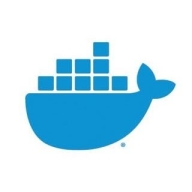

Splunk Observability Cloud and Docker compete in the monitoring and containerization markets. Docker seems to have the upper hand in cost-effectiveness and ease of use, while Splunk is recognized for its advanced monitoring capabilities.
Features: Splunk Observability Cloud is known for its comprehensive monitoring, customizable dashboards, and real-time notifications, which offer valuable insights into application performance and security. It provides extensive data integration and end-to-end visibility into the infrastructure. Docker's strengths include user-friendly containerization, excellent portability, and integration with various environments. It features an easy setup, seamless environment replication, and strong security and scalability options.
Room for Improvement: Splunk Observability Cloud users seek enhancements in pricing, scalability, integration with other tools, automation, stability, and user-friendly documentation. Docker could improve its stability, documentation, and advanced features. Users also express interest in security vulnerability reports and enhanced user interface options.
Ease of Deployment and Customer Service: Splunk Observability Cloud supports flexible deployments across on-premises, hybrid, and cloud environments, with generally responsive customer support, though faster assistance is desired. Docker offers straightforward deployment across various environments and benefits from robust community support, although direct support could be more intuitive. Splunk provides a structured support system, while Docker uses its open-source nature for self-guided solutions.
Pricing and ROI: Splunk Observability Cloud has a higher price point, raising concerns about long-term cost-effectiveness compared to competitors. Nonetheless, users report a positive ROI through improved visibility and efficiency. Docker's open-source solution is cost-effective with optional paid enterprise features. It is appreciated for its affordability and ROI when enterprise features are utilized. Docker's pricing flexibility and open-source model attract a wider audience.


Docker is a versatile container platform used for running and deploying applications in isolated environments, ensuring consistency across development, testing, and production.
Docker offers solutions for containerizing applications, automating deployments, and managing infrastructure through its robust platform. It supports CI/CD workflows, provides a development platform for container management, and simplifies the setup by using streamlined tools. Organizations leverage Docker for building microservices, running UI applications, deploying web services, and setting up secure environments. It also facilitates managing containers via Kubernetes and creating development stacks for enhanced productivity.
What are Docker's key features?Industries implement Docker for CI/CD pipelines, scaling services, and improving resource utilization. Tech companies use Docker for building and deploying their software in isolated environments. Finance and healthcare sectors deploy applications securely, ensuring compliance with regulatory standards. Educational institutions set up consistent development environments for coding labs and training students in advanced technologies.
Splunk Observability Cloud combines log search, data integration, and dashboards for seamless monitoring, enhancing infrastructure visibility and security. Its cloud integration and scalability support diverse environments, improving operational efficiency.
Splunk Observability Cloud offers comprehensive monitoring tools with user-friendly interfaces, enabling end-to-end infrastructure visibility. Its real-time alerting and predictive capabilities enhance security monitoring, while centralized dashboards provide cross-platform visibility. Users benefit from fast data integration and extensive insights into application performance. Despite its advantages, improvements could be made in integration with other tools, data reliability, scalability, and cost management. Users face challenges in configuration complexity and require better automation and endpoint protection features. Enhancing AI integration, alerts, and adaptation for high-throughput services could further improve usability.
What are the key features of Splunk Observability Cloud?In industries like finance and healthcare, Splunk Observability Cloud is implemented for application performance monitoring and infrastructure metrics. Its ability to track incidents and analyze machine data benefits network infrastructure, while distributed tracing and log analysis aid in tackling security threats. Organizations often integrate it for compliance and auditing purposes, enhancing visibility into network traffic and optimizing performance.
We monitor all Container Management reviews to prevent fraudulent reviews and keep review quality high. We do not post reviews by company employees or direct competitors. We validate each review for authenticity via cross-reference with LinkedIn, and personal follow-up with the reviewer when necessary.